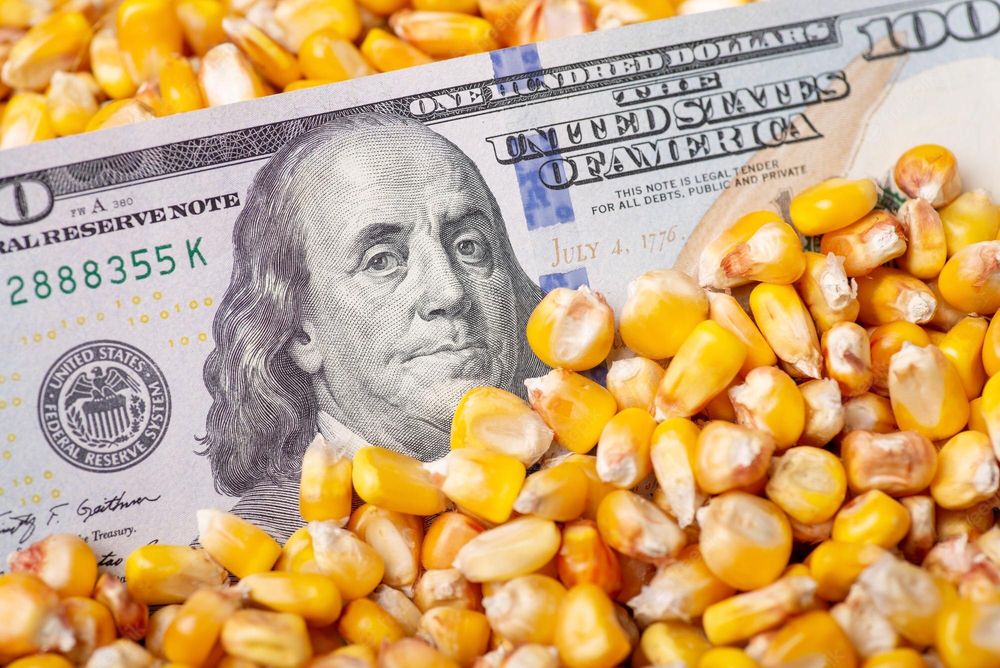Climate and Ukraine keep creating volatility on the CBOT of corn

On the eve of another supply and demand of corn from the United States Department of Agriculture (USDA), markets gain room for volatility. The US harvest is coming to an end, and the numbers are traditionally closed in January. Meanwhile, the market awaits any possible change in the Russian decision on the Ukrainian export corridor and observes the climate in South America as a preponderant variable. The change in China’s posture in relation to its plan for COVID zero may have cheered the markets, but the exchange rate in the country has still been a major negative variable for international prices.
A week after decreeing the closure of the Ukrainian export corridor, the Russian Defense Minister pointed out that there would soon be chances of a reopening for the flow of goods in the Black Sea. At first, wheat started last week with a strong rise in international prices and, at the end of the week, ended up slowing down with this possibility of reopening. At the same time, there is a sharp decline in the wheat crop in Argentina, and the government may limit the volumes to be exported next year. Corn has also reached the maximum number of exports determined by the government, 36 mln tons, and new registrations are only open for 2023, while the local crop hits the market in April.
Thus, we have two corn exporters, Ukraine and Argentina, practically out of global sales. At the moment, Brazil and the United States are exporting. US exports remain very discreet, basically 500 thousand tons a week for a period when it should be shipping 1 to 2 mln tons a week. These are data that could lead USDA to cut its forecast for US exports for 2023 again, even if that seems premature. Any cut in this projection could raise stocks for next year and create another moderation point for prices on the Chicago Board of Trade (CBOT).
The USDA report for this November suggests there are only minor corrections in production and perhaps the export data. Small productivity adjustments would not radically change the price orientation. The market is betting on a small increase in 22/23 carryover stocks by 1 to 2 mln tons, perhaps enough to contain the impetus of rising prices in the middle of the 2022 harvest.
Other highlights for the report are Europe and China. Europe cut its corn crop again to 54.2 mln tons, and USDA still points to over 56 mln tons. This adjustment could generate more potential demand for wheat, replacing corn, or greater corn imports by the bloc. In the Chinese case, the country is reaping its crop and will not depend on new imports until April/May 2023. However, there is now a divergence between production estimates. USDA shows a record local crop of 274 mln tons, while the Chinese government released a new figure of 270 mln tons.
The Chinese government’s decision to relax its COVID zero health program may have encouraged markets last week. This could inhibit new shutdowns in important provinces for local industrial activity and focus on some more consistent economic recovery. However, the additional issue at the moment is the strong devaluation of the yuan, which reached its all-time high last week at 7.30 yuan per dollar. The devaluation inhibits a favorable composition of imports by China or, at least, forces import prices to fall in dollars to facilitate entry into the Chinese market.
Amid these indicators for the week of the USDA report is the natural focus on the climate in South America. The rains are getting normal in Brazil, but they are still below normal in Argentina. November to January is a key period for the region’s crops. In 2021, rains stopped in November in southern Brazil and Argentina and caused heavy production losses. In a La Nina year, some price volatility due to weather variables in the region is not abnormal.
Read also
Wheat in Southern Brazil Impacted by Dry Weather and Frosts
Oilseed Industry. Leaders and Strategies in the Times of a Great Change
Black Sea & Danube Region: Oilseed and Vegoil Markets Within Ongoing Transfor...
Serbia. The drought will cause extremely high losses for farmers this year
2023/24 Safrinha Corn in Brazil 91% Harvested
Write to us
Our manager will contact you soon



